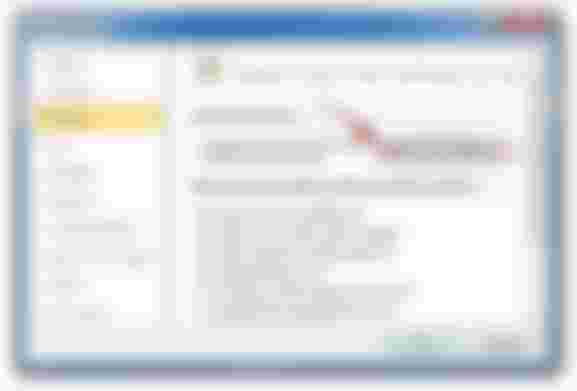
The Greek letters you are several likely to see for ideas are α (alpha), β (beta), γ (gamma), δ (delta), and θ (theta). And of course, you'll be doing π (pi) all the time.
When you are coping with geometry and trigonometry, you will recognize a lot of Greek Letters. It will be required to know how the names of these letters are spelled and declared.
Make sure you discover how to spell and prepare at least these six Greek characters. While in the beginning steps of learning, it is adequate to have a basic knowledge of the alphabet. While you learn more and more of the language, it will get much easier.
Insert Alpha, Beta, Delta, Gamma, Omega, Pi, Sigma, Theta, and Other Greek Symbols in Word Documents
You can obtain Greek letters or symbols (such as Alpha, Beta, Delta, Gamma, Omega, Pi, Sigma, or Theta) in Microsoft Word documents in several ways.
In this article, we’ll look at 6 ways to insert Greek symbols-
Use the Insert Symbol command
Press Alt and then enter a number series
Select your keyboard shortcuts
Use the Symbol font and press the similar letter on the keyboard
Use Math AutoCorrect
Type AutoCorrect entries in a comparison block or placeholder
Inserting Greek symbols using Insert Symbol
1. To insert Greek symbols using Insert Symbol -
Click in the document where you want to include the Greek symbol.
Click the Insert tab in the Ribbon.
In the Symbols group, click Symbol.
A drop-down menu appears.
Click More Symbols.
A dialog box appears.
If needed, click the Symbols tab.
Select (normal text) from the Font drop-down menu and then Greek and Coptic from the Subset menu.
Alternatively, you could select the Symbol font.
Click the symbol or letter you want to use.
Click Insert.
Click Close.
The Insert Symbol dialog box represents Greek letters or symbols when you select standard text as the font and Greek and Coptic as the subset -

2. Using Alt keyboard shortcuts to insert Greek symbols
You can press the AltUsing Alt keyboard shortcuts key in combination with numbers on the numeric keypad to insert Greek symbols.
Press Alt and then enter number sequences on the numeric keypad to enter the following -
α (Alpha) – Alt + 224
ß (Beta) – Alt + 225
Γ (Gamma) – Alt + 226
Δ (Delta) – Alt + 235
ε (Epsilon) – Alt + 238
Θ (Theta) – Alt + 233
π (Pi) – Alt + 227
µ (Mu) – Alt + 230
Σ (Uppercase Sigma) – Alt + 228
σ (Lowercase Sigma) – Alt + 229
τ (Tau) – Alt + 231
Φ (Uppercase Phi) – Alt + 232
φ (Lowercase Phi) – Alt + 237
Ω (Omega) – Alt + 234
If these sequences don’t work, press the NumLock key on the numeric keypad. If you don’t have a numeric keypad, you may be capable to press the Fn key and obtain the numbers at the top of your keyboard.
In the Insert Symbol dialog box, Alt keyboard alternatives are also performed for each part at the bottom.
The Unicode (hex) sequences listed in the dialog box are accessed differently. In the document, press the indicated keys (using the numeric keypad) and then press Alt + X. Note the number sequence at the bottom of the dialog box -

3. Creating your keyboard shortcuts for Greek symbols
You can also create your keyboard alternatives for Greek symbols. The most simple method is to purchase Shortcuts using the Insert Symbol dialog box.
To create your keyboard shortcut for a Greek symbol -
Click the Insert tab in the Ribbon.
In the Symbols group, click Symbol.
A drop-down menu appears.
Click More Symbols.
A dialog box appears.
If needed, click the Symbols tab.
Select Symbol from the Font drop-down menu. Click the symbol or letter you want to use.
Click Shortcut.
A dialog box appears.
Click in the Press new shortcut key box.
Press the keys you want to use (for example, press Ctrl + Alt + S).
If the keyboard shortcut is allocated to a different command, Word will arrange it so you can choose if you want to replace it. Click Assign. Click Close twice. To insert the character, press the keys you specified.
The following dialog box resembles when you click Shortcut in the Symbol dialog box -

These shortcuts are typically saved in the Normal (default) template. When you close Word, you should be assisted to save the Normal template. Be sure to click Save.
4. Inserting Greek symbols by switching to the Symbol Font

You can use the Symbol font to insert Greek letters or symbols in Word documents. To insert letters or symbols using the Symbol font -
Click in the place in the document where you want to insert the letter or symbol.
Press Ctrl + Shift + Q to switch to the Symbol font.
Type the character to insert the required letter or symbol.
The Greek characters correspond to standard characters.
For example, if you type “a”, Word enters the corresponding Greek lowercase letter. Note that this works for one character only and then the font changes back to the normal font.
5. Inserting Greek symbols Using AutoCorrect for Math
A different approach to insert Greek symbols is to apply the Math AutoCorrect choice and then type-specific courses to insert the required symbol.
To turn on AutoCorrect for Math -
Click the File tab in the Ribbon.
Click Options.
A dialog box resembles.
In the categories on the left, click Proofing.
Click AutoCorrect Options in the pane on the right.
A dialog box appears.
Click the Math AutoCorrect tab.
Select or check Use Math AutoCorrect rules outside of math regions.
Click OK twice.
The Math AutoCorrect options appear as follows -

Once you have enabled this option, you can type the names of symbols preceded by a backslash (\) both in the document and in an equation block. For example, type lambda and then press the Spacebar to enter λ.
6. Entering Greek symbols in equalization blocks or placeholders
To enter Greek symbols in a comparison block or placeholder -
Click in the document where you want to enter an equation.
Click the Insert tab in the Ribbon.
In the Types group, click Equation to insert a new equation block or placeholder. Alternatively, type Alt + equal sign (=). You can use a current equation block or placeholder.
Click in the corresponding block or placeholder and type a backslash (\) plus the name of the type (such as \lambda) and then press the spacebar.
Below is a new equation block or placeholder -

Summary
A lot of Greek letters are used in science and math. They are usually used for constants, variables, and functions.






